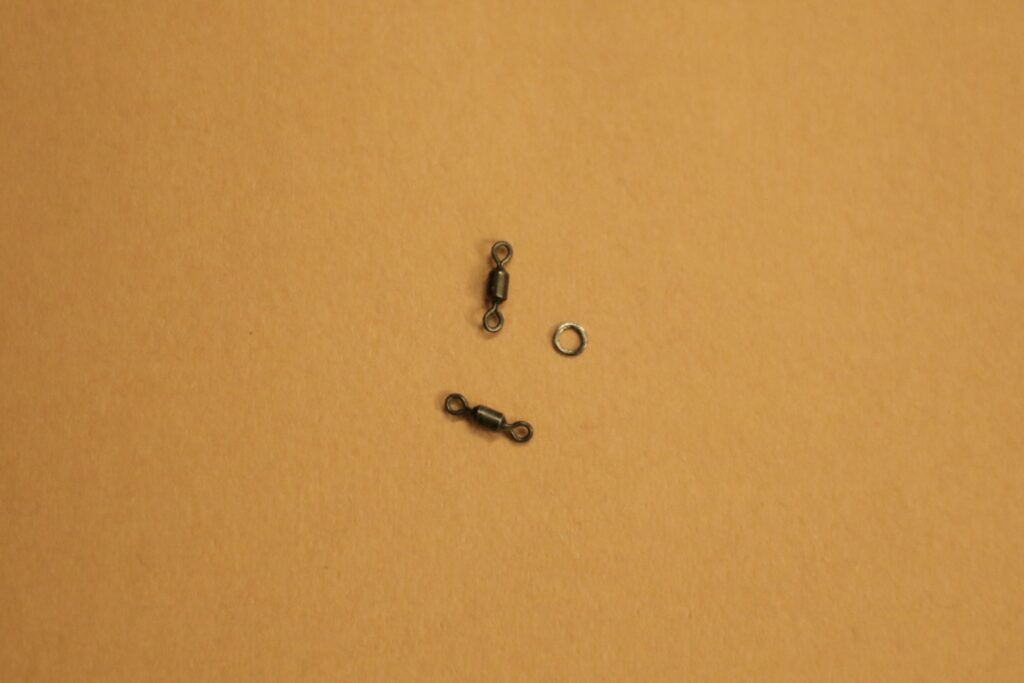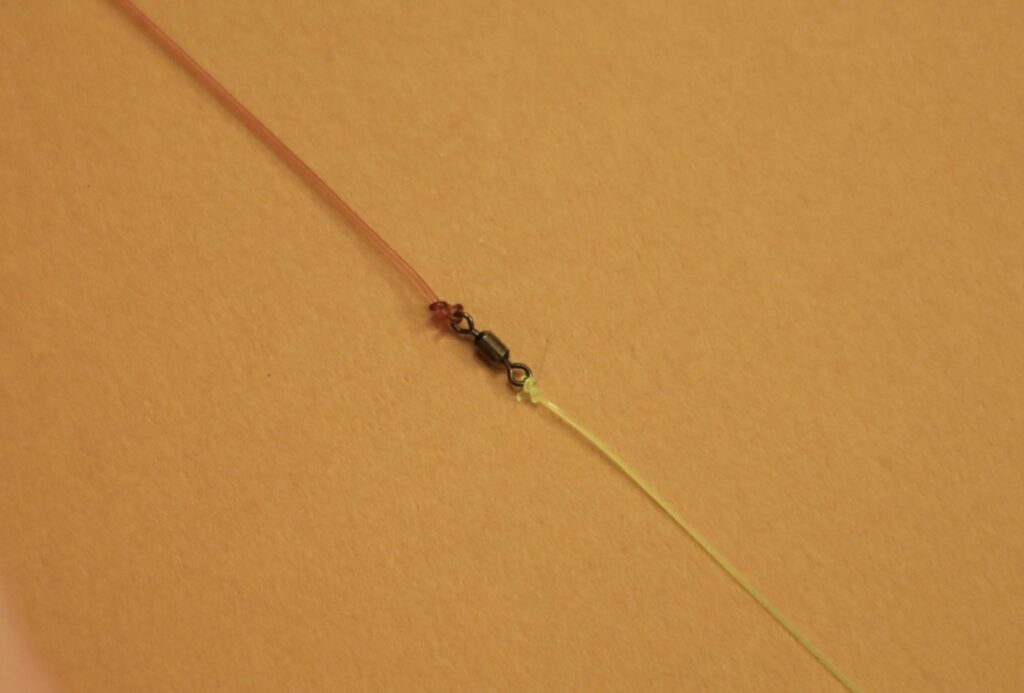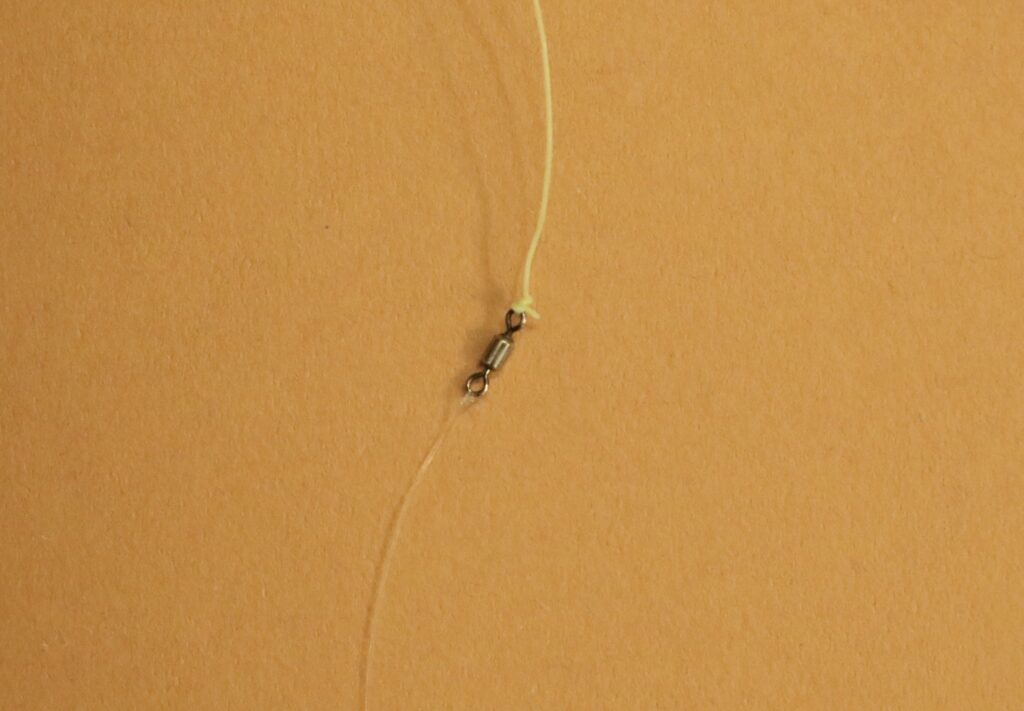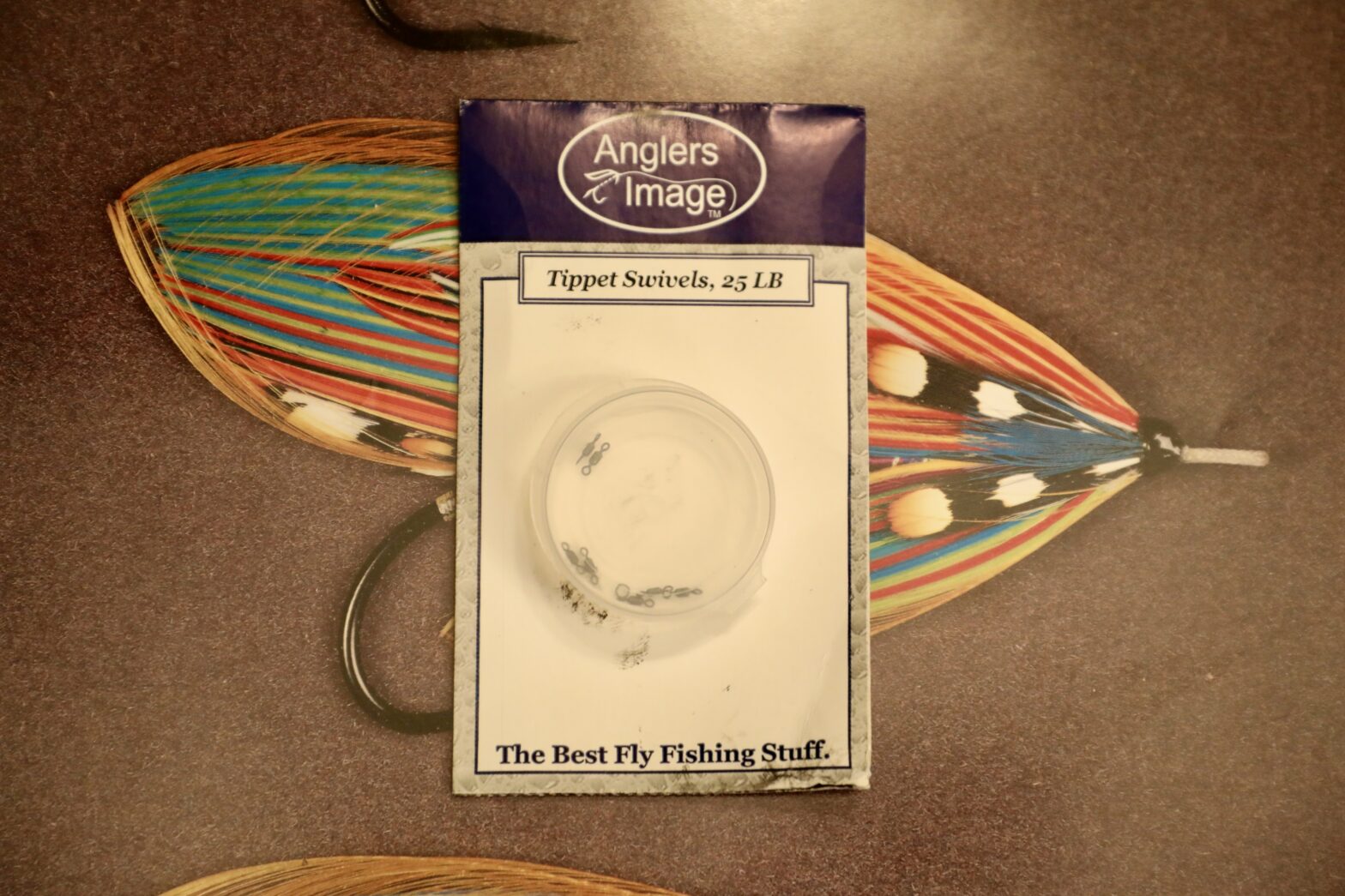
From Tippet Swivels to Tippet Rings
Notes: This pertains to fishing subsurface nymphs and lighter streamer patterns on a tight line and/ or mono-rig using two or more flies. To drill down even more: rod weights are 2 to 5 with mono no heavier than .020 when making connections to tippet swivels. AND This is not any formal assertion or discourse on the physics of moving water. This is all anecdotal, coming from notes scribbled on a notepad while trying to work out my mono-rig system, in real time, standing in the stream.
I transitioned from tippet rings to tippet swivels quite some time ago. It was a matter of what I will now call efficiency, although in the very beginning it was borne out of sheer annoyance…. which was the tendency of an irreparable tangle to form in a certain section of the tippet.
The tag nymph seemed to constantly wrap around the terminal tippet of the point fly when fishing nymphs on a tight line mono-rig setup. The lighter the tag nymph the more it seemingly tangled around each other. This was not on every drift but occurred often enough to understand that a solution would be of greater benefit than simply just avoiding tangles. This is how I came to solve the problem and open up a bit of dialogue on weights and ratios within subsurface presentations.
Weights and measures are a big part of this tactic – our sport continues to evolve toward the concepts of light, fast, and accurate. These weights and measures will be of greater importance in our future ability to refine and dial-in the tackle to our tactics. The path is set and it is toward finer, stronger, and more precise degrees of movement. As you cast upstream and lead your flies through your drift they are certainly going to pass through currents of differing velocity and direction. Regardless of whether you use a tippet ring or a tippet swivel these variances will cause drag in different parts of your leader setup. It is a matter of the degree in which this occurs.
I began to think about the many variable physical factors affecting my flies which cause the most unnatural actions, the most unnatural drifts. But what even truly defines a natural drift? We can recognize it more readily when dry fly fishing – our offerings are on or in the surface. We can physically see our flies more often than not. The definition is harder when you have an extra degree of movement to account for in the subsurface nature of this tight-line technique. It creates a different set of circumstances to overcome, the solving of which is built on the foundations of movement, time, and possibly a little intuition.
Maybe the intuitive feeling of having a decent drift when it’s happening, in real time, is the overall sum total of the actions of our flies in relation to how they move relative to each other? It is possible this aforementioned tangle in my leader setup is a result of true movement… maybe the more turbulent water above the point fly (which is in the slower zone near the bottom) wants to rip away the tag fly above to send it further downstream? Possibly we can only display movement in our flies within certain parameters, set by the moving water, and we must refine our tactics to these parameters until we are able to recognize some form of progress.


Tippet swivels lessen the restriction of lateral movement of the flies. I think of lateral movement as circular or rotational position changes of the flies within the current, relative to the sighter/ tippet connection point – which is the closest anchor point of resistance. Our flies are unfortunately tethered by a proportionally heavier (than one usually realizes) piece of tippet. Again, pure movement can only be something we can get close to. Weight ratios get overlooked, I think about the difference in weight between our sections of leader versus the overall weight of our flies – like the weight of the free section of line between the rod tip and eye of fly… or about the weight ratio between the knot we use and the fly itself. It’s something to think on. How can we make this transference of weight disperse before its influence acts heavily on the flies? How do we utilize this weight to keep on our set course of drift? What we view as natural and what the stream and its inhabitant view as natural regarding movement are much different than we think. I have no answers… I consider it a thought experiment.
Our game as tight liners is to devise any means necessary to reduce this influence on the tippet while still maintaining firm lines of drift. Tippet swivels have greatly helped me to achieve this. Without getting in to leader formulas and suggesting entire new systems of tackle to fish, simply replace each tippet ring with a tippet swivel and stick with it for a few weeks worth of fishing. For most it will be the use of the size shown in the photos, 25lb. They will handle .020 material and smaller. I use the Davy Knott (thank you Mr. Watton) exclusively and it is no different when attaching monofilament or fluorocarbon to tippet swivels.
Conduct an experiment and see how and what transpires. Maybe it does nothing for your game, or maybe it does. Really feel and envision your flies moving through the current and aid in their movement with your leading of the rod tip… dancing along the line of what constitutes as your conception of natural movement. Our leading the flies through the drift acts as nothing more than quick and deliberate corrections which maintain a preselected and desired course. This line is the where the fish find your flies and will maybe even be fooled in to taking one. So dance on.
Sean Eagan
Degenerate Angler
Thanksgiving 2022
